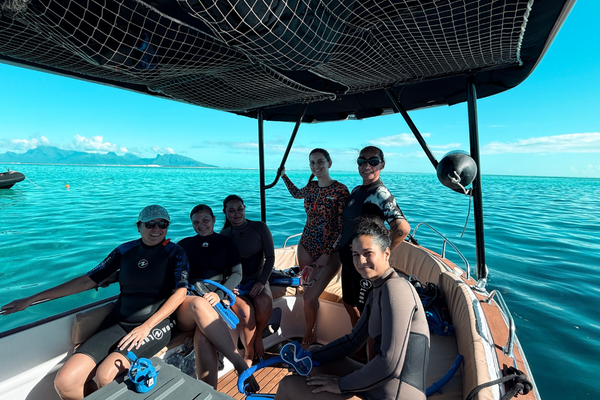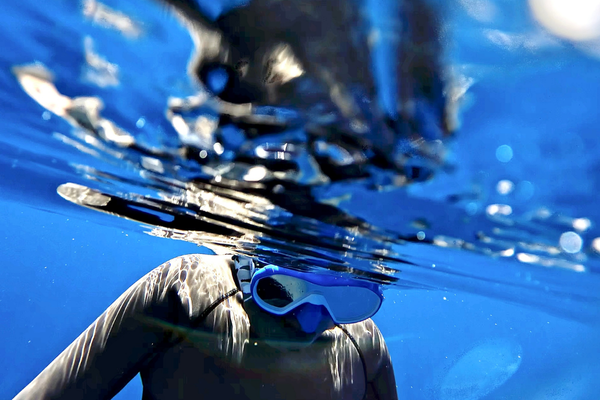
Diving into the blue: our encounter with the whales of Tahiti
There are mornings when you can feel it before the day even begins — that it will hold something rare, something unforgettable. That Saturday was one of them. At eight o’clock sharp, we gathered on the quay of Papeete, just beside the celebrated floating restaurant Le Moana. Six of us — Mélodie, Davina, Sandrine, Tamara, Ranitea, and myself — warriors of the Moana Voyages team, ready to embark on an adventure beyond the ordinary: a journey to encounter the giants of the sea with Wild Explorer.
On the dock, our guide Teiki was already waiting, alongside Vaimanu, the boat captain freshly arrived from Rangiroa. Comfort awaited us on board: cushioned seats, a secure space to tuck our belongings away from the spray, and the kind of thoughtful details that immediately set a reassuring tone. Even before leaving the harbor, Teiki’s calm voice carried us through the day’s plan, weaving excitement into every word.
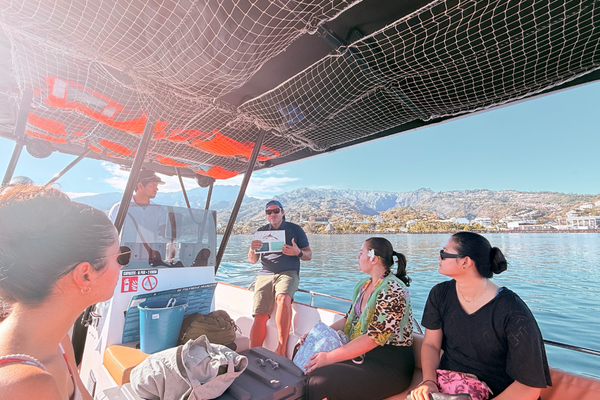
The ballet of the dolphins
The lagoon greeted us with a troupe of dolphins, darting and spinning as if to escort us into their realm. They spiraled in playful arcs, their movements catching the soft morning light, which danced in silver ripples across the deep-blue water. Time seemed to slow. Beyond them, slender outrigger canoes etched the horizon, gliding like brushstrokes on an endless canvas. Already, our adventure felt like a dream breaking gently into daylight.
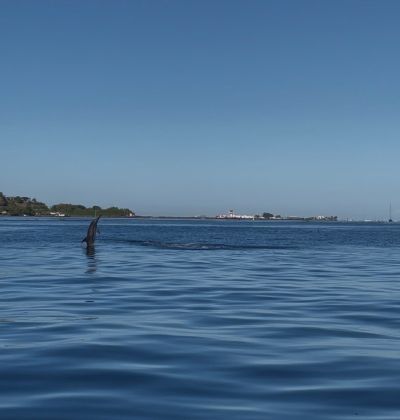
The plane wreckage: a first dive
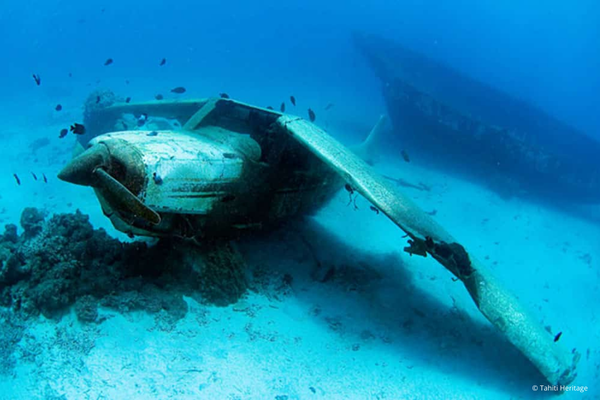
Our first stop was Punauuia where the hushed wreck of an airplane lies at rest, its metal frame transformed into a shelter for coral and fish. Before venturing further into the open ocean, Teiki had us test our gear—flippers, masks, snorkels, sleek wetsuits—everything provided, everything perfectly arranged. His instructions were simple, almost ritual: “Don’t slap the surface with your fins. Stay close. Follow the guide.” Then, one by one, we slipped into the crystalline water.
Four meters below, the ghost plane appeared, half-legend, half-relic. It was easy to imagine it as the Little Prince’s aircraft, fallen into another world. For those willing to dive deeper, there was the thrill of brushing its wing and capturing the moment in a single breathless photograph. Fifteen minutes suspended in time—just enough to tame our emotions, just enough to feel the ocean embrace us—before we pressed on.
The call of the sea
Not far beyond, we passed the Fa’afaite canoe, the very one that had once sailed twenty-five days to Hawai‘i, retracing the ancient routes of Polynesian navigators. A solemn, almost spiritual presence, as though blessing the journey that lay ahead.
And then the sea stirred. Off the coast of Punaauia, a colossal shadow breached the surface — a whale. Within minutes she was there, immense and magnificent, her fin slicing through the swell, her breath erupting like a drumbeat of the ocean itself. At her side, a calf twisted and leapt, a tender, playful dance that seemed to celebrate life. On deck, hearts quickened.
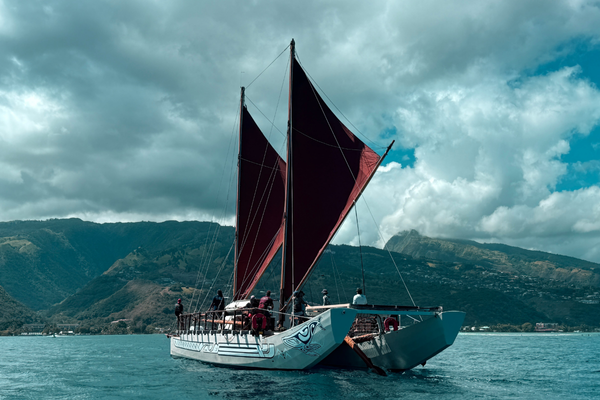
Why do whales come to French Polynesia ?
Every year, between July and November, humpback whales migrate from the frozen waters of Antarctica to the warmth of Polynesia. Here they breed, give birth, and rest. To encounter them is not simply an excursion; it is to witness a timeless cycle, fragile and eternal, a reminder of the deep pulse that governs life in the ocean.
Strict rules govern this privilege, laid out by the Environmental Department: never closer than 100 meters, never blocking their path, never disturbing their peace. At most, three boats may linger nearby, and if conditions allow, only six swimmers may slip into the water. These boundaries are essential — an act of respect to ensure that wonder does not become intrusion.
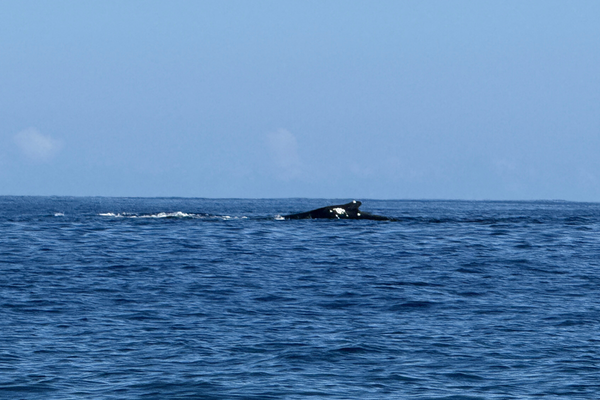
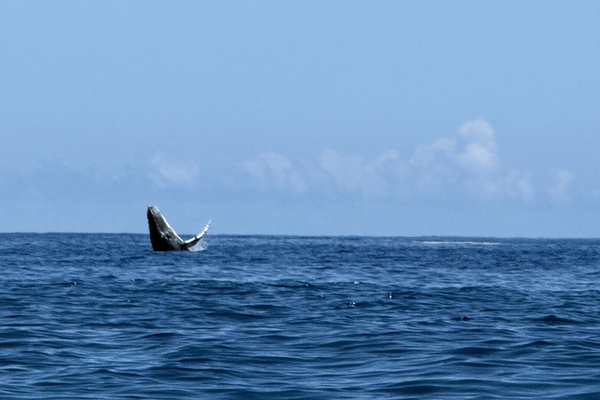
Diving: a moment of grace
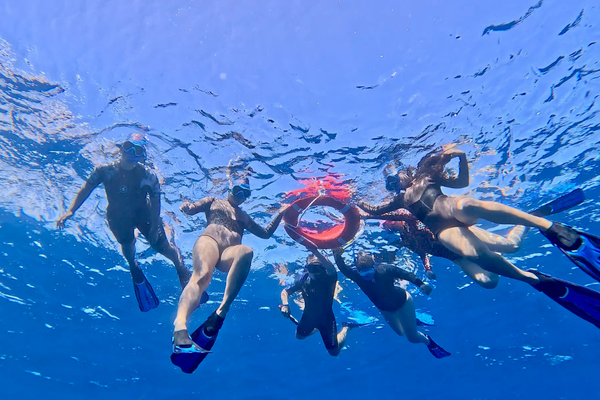
Later, as we headed west toward Paea, the sea was calm and the sun rode high. Ever vigilant, Vaimanu caught sight of another pair on the horizon — a whale and her calf. Their dorsal fins broke the surface with elegance, and a ripple of quiet elation swept across the deck. Smiling, Teiki gave the signal: today, we would enter the water. Excitement surged; masks were adjusted, fins tightened. The ocean awaited.
Cool and invigorating, the water embraced us. Visibility stretched endlessly, magnifying corals, fish, and flickering rays of light. There is a moment, when you slip into the immensity of the ocean, where you feel at once small, vulnerable, and achingly alive. That is what we felt when we saw her.
She hung there in the blue — serene, still, suspended upright in slumber. Her calf spun and circled, curious, daring, closing the distance until we pulled gently back to honor the space between us. A flick of her fin, the glint of an eye, a melody barely heard but deeply felt… Each second was a miracle, a silent communion between us and the wild.
Back to earth... or almost
When we climbed back aboard, our faces were alight, our smiles dazed, as if too much wonder had overflowed. For some among us, it was a first encounter, one that will never leave them. For all of us, it was unforgettable.
Teiki and Vaimanu, ever attentive, offered fresh juice, vegetable chips, even a cheeky splash of punch. At Moana Voyages, we know how to honor tradition: nothing compares to fresh poisson cru au lait de coco after a day at sea—equal parts reward and ritual.
As we turned homeward, music drifted softly through the speakers. Hair whipped in the breeze, sunlight shimmered on the waves. To port, the green slopes of Tahiti’s west coast. To starboard, Moorea, a postcard rising from the sea.
No, we were no longer the same. A part of us remained out there, in the ocean. And the question burned quietly on every pair of lips: when do we return?
